Blog
Australians Seeking Botox Injects to Reduce Sweaty Feet
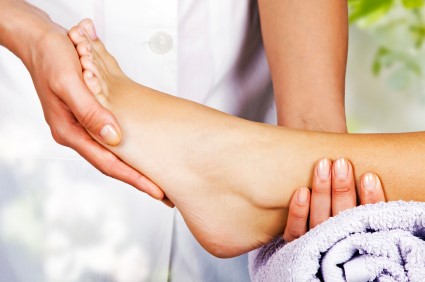 Australians have recently been found to reduce hyperhidrosis of the feet with the help of Botox injections. According to neurologist and clinical professor Dr. Peter Silbert of University of Western Australia, when Botox is injected near a sweat gland, it blocks communication between the gland and the nerves. This is said to prevent excessive sweating in the area, but the area must be injected every six months which comes with side effects such as weakness.
Australians have recently been found to reduce hyperhidrosis of the feet with the help of Botox injections. According to neurologist and clinical professor Dr. Peter Silbert of University of Western Australia, when Botox is injected near a sweat gland, it blocks communication between the gland and the nerves. This is said to prevent excessive sweating in the area, but the area must be injected every six months which comes with side effects such as weakness.
If you are suffering from hyperhidrosis contact one of our podiatrists from New York Foot and Ankle. Our doctors will treat your foot and ankle needs.
Hyperhidrosis of the Feet
Hyperhidrosis is a rare disorder that can cause people to have excessive sweating of their feet. This can usually occur all on its own without rigorous activity involved. People who suffer from hyperhidrosis may also experience sweaty palms.
Although it is said that sweating is a healthy process meant to cool down the body temperature and to maintain a proper internal temperature, hyperhidrosis may prove to be a huge hindrance on a person’s everyday life.
Plantar hyperhidrosis is considered to be the main form of hyperhidrosis. Secondary hyperhidrosis can refer to sweating that occurs in areas other than the feet or hands and armpits. Often this may be a sign of it being related to another medical condition such as menopause, hyperthyroidism and even Parkinson’s disease.
In order to alleviate this condition, it is important to see your doctor so that they may prescribe the necessary medications so that you can begin to live a normal life again. If this is left untreated, it is said that it will persist throughout an individual’s life.
A last resort approach would be surgery, but it is best to speak with your doctor to find out what may be the best treatment for you.
If you have any questions, please feel free to contact our offices located in Franklin Square and Bethpage, NY. We offer the newest diagnostic and treatment technologies for all your foot and ankle needs.
Al Sharpton’s daughter Suing NYC for Five Million
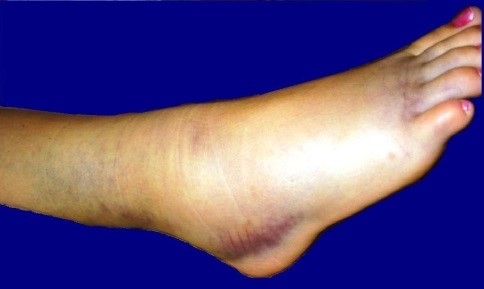 Al Sharpton’s daughter Dominique is suing New York City for five million dollars after she sprained her ankle on uneven pavement. According to her father’s company National Action Network, Dominique has been in continuous pain ever since the injury. Although a few months after the incident she was seen using both of her feet with ease at events in Washington, D.C. and Miami, she is still seeking a settlement for medical bills and future pain.
Al Sharpton’s daughter Dominique is suing New York City for five million dollars after she sprained her ankle on uneven pavement. According to her father’s company National Action Network, Dominique has been in continuous pain ever since the injury. Although a few months after the incident she was seen using both of her feet with ease at events in Washington, D.C. and Miami, she is still seeking a settlement for medical bills and future pain.
Ankle sprains are common, but need immediate attention. If you have any concerns about your potential ankle sprain contact one of our podiatrists of Advanced Foot and Ankle Specialists. Our doctors will treat your foot and ankle needs.
How Does an Ankle Sprain Occur?
Ankle sprains take place when the ligaments in your ankle are torn or stretched beyond their limits. There are multiple ways that the ankle can become injured, including twisting or rolling over onto your ankle, putting undue stress on it, or causing trauma to the ankle itself.
What are the Symptoms?
- Mild to moderate bruising
- Limited mobility
- Swelling
- Discoloration of the skin (depending on severity)
Preventing a Sprain
- Wearing appropriate shoes for the occasion
- Stretching before exercises and sports
- Knowing your limits can aid in prevention
Treatment of a Sprain
Treatment of a sprain depends on the severity. Many times, people are told to rest and remain off their feet completely, while others are given an air cast. If the sprain is very severe, surgery may be required.
If you have suffered an ankle sprain previously, you may want to consider additional support such as a brace and regular exercises to strengthen the ankle.
If you have any questions please feel free to contact our offices located in Illinois. We offer the newest diagnostic tools and technology to treat your foot and ankle needs.
Tips to Avoid Blisters from Sandals and Summer Footwear this Season
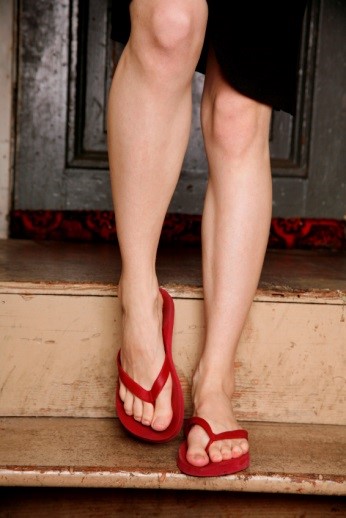 Leah Bourne of StyleCaster has a few tips in avoiding blisters when wearing sandals. For starters, when purchasing a new pair of sandals, wear them around the house with socks for a few days to stretch them out and ease the friction they will cause on the feet. Using an adhesive bandage on the heels will prevent blisters and scraping on the back of the foot, this should also work if the sandal scrapes against any other part of the foot. Additionally, you can tape moleskin or fabric around any part of the shoe that is causing blisters. Placing clear deodorant, talcum powder, baby oil, or taping cotton balls to the feet near blister prone areas will also help prevent any from occurring.
Leah Bourne of StyleCaster has a few tips in avoiding blisters when wearing sandals. For starters, when purchasing a new pair of sandals, wear them around the house with socks for a few days to stretch them out and ease the friction they will cause on the feet. Using an adhesive bandage on the heels will prevent blisters and scraping on the back of the foot, this should also work if the sandal scrapes against any other part of the foot. Additionally, you can tape moleskin or fabric around any part of the shoe that is causing blisters. Placing clear deodorant, talcum powder, baby oil, or taping cotton balls to the feet near blister prone areas will also help prevent any from occurring.
Blisters are prone to making everyday activities extremely uncomfortable. If you have any concerns with blisters on your feet contact one of our podiatrists of New York Foot and Ankle. Our doctors will treat your foot and ankle needs.
Foot Blisters
Foot blisters develop as a result of constantly wearing tight or ill-fitting footwear. This happens due to the constant rubbing from the shoe, which can often lead to pain.
What are Foot Blisters?
A foot blister is a small fluid-filled pocket that forms on the upper-most layer of the skin. Blisters are filled with clear fluid and can lead to blood drainage or pus if the area becomes infected.
How do Blisters Form?
Blisters on the feet are often the result of constant friction of skin and material, usually by shoe rubbing. Walking in sandals, boots, or shoes that don’t fit properly for long periods of time can result in a blister. Having consistent foot moisture and humidity can easily lead to blister formation.
Prevention & Treatment
It is important to properly care for the affected area in order to prevent infection and ease the pain. Do not lance the blister and use a band-aid to provide pain relief. Also, be sure to keep your feet dry and wear proper fitting shoes. If you see blood or pus in a blister, seek assistance from a doctor.
If you have any questions please feel free to contact our offices located in Franklin Square and Bethpage, NY. We offer the newest diagnostic tools and technology to treat your foot and ankle needs.
Finally a Few Companies that Provide Shoes for Smaller Women
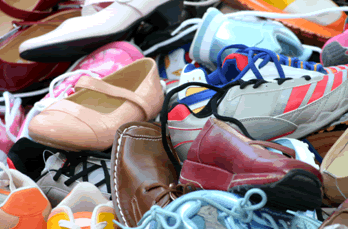 According to Perrie Samotin of StyleCaster, smaller women of today are having an extremely difficult time finding the right shoe size. More often than not, if you are a woman with a shoe size smaller than size six, you will most likely be out of luck on finding fashionable and well-fitting shoes. This occurs since the average shoe size of women today stands between eight and a half and nine. Samotin found a list of high fashion brands that provide a range of shoes sizes sometimes starting at size four. J. Crew, Asos, Eileen Fisher and Sam Edelman are just a couple of brands with a wide range of shoe sizes; however, these smaller sizes are typically sold out quick.
According to Perrie Samotin of StyleCaster, smaller women of today are having an extremely difficult time finding the right shoe size. More often than not, if you are a woman with a shoe size smaller than size six, you will most likely be out of luck on finding fashionable and well-fitting shoes. This occurs since the average shoe size of women today stands between eight and a half and nine. Samotin found a list of high fashion brands that provide a range of shoes sizes sometimes starting at size four. J. Crew, Asos, Eileen Fisher and Sam Edelman are just a couple of brands with a wide range of shoe sizes; however, these smaller sizes are typically sold out quick.
Getting the right shoe size is an important part of proper foot health. If you have any concerns about your feet contact podiatrist one of our podiatrists of New York Foot and Ankle. Our doctors will treat your foot and ankle needs.
Getting the Right Shoe Size
There are many people that wear shoes that are ill-fitting, which affects their feet and posture. Selecting the right shoes is not a difficult process so long as you keep several things in mind when it comes to selecting the right pair.
- When visiting the shoe store, use the tools available to measure your foot
- When measuring your foot with your shoe on, add 1-2 inches to the size
- Be sure there is ‘wiggle room’. There should be about an inch between your toes and the tip of your shoes
- Do not always assume you are the same size, as manufacturers run differently
- Purchase shoes later in the day as your feet swell as the day progresses
- If a shoe is not comfortable, it is not suitable. Most shoes can’t be ‘broken in’, and comfort should be the ultimate goal when it comes to choosing the right pair of shoes
As our feet hold our body weight and keep us moving, it is important to treat your feet right by choosing the right pair of shoes that can provide them comfort and mobility with minimal pain.
If you have any questions please feel free to contact our offices located in Franklin Square and Bethpage, NY. We offer the newest diagnostic tools and technology to treat your foot and ankle needs.
Treatment for Flat Feet not always Necessary
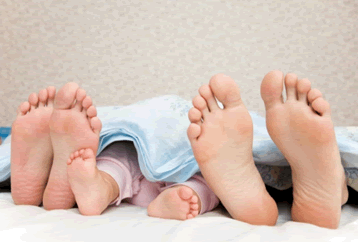 Flat feet occur through the over pronation of the foot, through a deformity at birth where the arch is typically flexible, or acquired over time when pressure is applied to the foot and the arch collapses. Improper footwear, foot abnormalities, or a ruptured tendon can all also lead to a flat foot. Typically if no pain is present, treatment may not be required other than wearing orthotics. However, if there is pain in a flat foot treatment can range from taping the foot, wearing custom orthotics, stretching, or fixing the ailment with surgery in extreme cases.
Flat feet occur through the over pronation of the foot, through a deformity at birth where the arch is typically flexible, or acquired over time when pressure is applied to the foot and the arch collapses. Improper footwear, foot abnormalities, or a ruptured tendon can all also lead to a flat foot. Typically if no pain is present, treatment may not be required other than wearing orthotics. However, if there is pain in a flat foot treatment can range from taping the foot, wearing custom orthotics, stretching, or fixing the ailment with surgery in extreme cases.
Living with flat feet does not always mean there will be a problem with them. If you are having trouble with your flat feet, speak to one of our podiatrists of New York Foot and Ankle. Our doctor will answer any of your foot and ankle related questions and attend to all of your podiatric needs.
What are Flat Feet?
Flat feet are a condition in which the arch of the foot is depressed and the sole of the foot is almost completely in contact with the ground. Standing about 20-30% of the population generally has flat feet because their arch never formed during growth.
Conditions & Problems:
Having flat feet makes it difficult to run or walk because of the stress placed on the ankles.
Alignment – The general alignment of your legs can be disrupted, because the ankles move inward which can cause major discomfort.
Knees – if you have complications with your knees, flat feet can be a contributor to arthritis in that area.
Symptoms:
Pain around the heel or arch area
Trouble standing on the tip toe.
Swelling around the inside of the ankle.
Flat look to one or both feet.
Having your shoes feel uneven when worn
Treatment:
If you are experiencing pain and stress on the foot you may weaken the posterior tibial tendon, which runs around the inside of the ankle.
If you have any questions, please contact our offices located in Franklin Square and Bethpage, NY. We offer the newest diagnostic and treatment technologies for all your foot care needs.
Quality Shoe Materials can help prevent Foot Problems
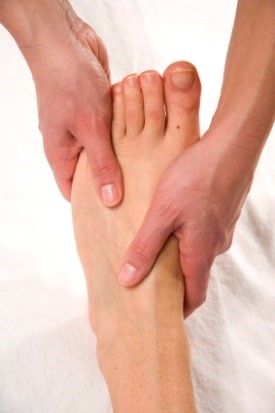 Leo Faramelli of Leo’s Shoe Repair has a lot of experience selling and repairing shoes and has a vast understanding of how certain shoes can cause problems for the feet. “Older shoes are made a lot better. There’s much more real leather. Today, most of the shoe is vinyl to an extent,” Leo states. Today shoes are made with a cheaper grade of leather than is then coated with vinyl and plastic. The shoes look great but that are not as quality, putting customers feet at risk for problems such as corns. Shoes made out of real leather will mold to your feet.
Leo Faramelli of Leo’s Shoe Repair has a lot of experience selling and repairing shoes and has a vast understanding of how certain shoes can cause problems for the feet. “Older shoes are made a lot better. There’s much more real leather. Today, most of the shoe is vinyl to an extent,” Leo states. Today shoes are made with a cheaper grade of leather than is then coated with vinyl and plastic. The shoes look great but that are not as quality, putting customers feet at risk for problems such as corns. Shoes made out of real leather will mold to your feet.
Shoes that are not properly suited for the feet can cause corns and other podiatric problems. If you have any foot or ankle concerns, contact Dr. Laurence D. Landau and Dr. Corrine E. Renne of New York Foot and Ankle. Our doctors will attend to your foot and ankle needs.
Corns: What are they? And how do you get rid of them?
Corns can be described as areas of the skin that have thickened to the point of becoming painful or irritating. They are often layers and layers of the skin that have become dry and rough, and are normally smaller than calluses.
Ways to Prevent Corns
There are many ways to get rid of painful corns such as wearing:
- Well-fitting socks
- Comfortable shoes that are not tight around your foot
- Shoes that offer support
Treating Corns
Treating corns involves removing the dead skin that has built up in the specific area of the foot. Salicylic acid can help in getting rid of these corns because it dissolves keratin, which is the protein that makes up a good majority of corns. Podiatrists recommend that people with diabetes not use salicylic acid but should consult with their podiatrist regarding the treatment of corns.
If you have any questions feel free to contact our offices located in Franklin Square and Bethpage, NY. We offer the newest diagnostic tools and technologies to treat your foot and ankle needs.
Read more about Corns on the Feet
Educate the Elderly about Falling Dangers
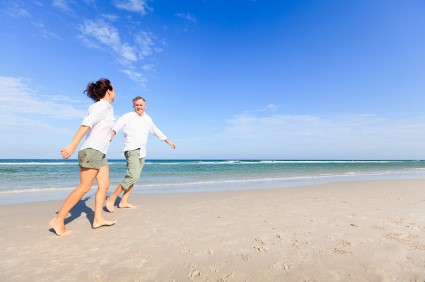 According to J.T. Miller, children and younger relatives of the elderly should help them understand the importance of keeping their feet stable and healthy to prevent falls and other injuries. With age adults can become unsteady on their feet, so it is important to start with light exercising to make the legs and feet stronger for stability.
According to J.T. Miller, children and younger relatives of the elderly should help them understand the importance of keeping their feet stable and healthy to prevent falls and other injuries. With age adults can become unsteady on their feet, so it is important to start with light exercising to make the legs and feet stronger for stability.
Safe footwear with rubber soles and low heels is the safest type of shoe for the elderly with the addition for proper fit and foot support. Canes and walkers are also available to aid in stability as well as a hand held grabber tool so they do not have to reach too high or low for certain items.
Proper foot care is something many older adults forget to consider. For more information, consult with one of our podiatrists of New York Foot and Ankle. Our doctors will assist you with all of your podiatric concerns.
The Elderly and their Feet
As we age we start to notice many changes in our body, but the elder population may not notice them right away. Medical conditions may prevent the elderly to take notice of their foot health right away. Poor vision is a lead contributor to not taking action for the elderly.
Common Conditions
Neuropathy – can reduce feeling in the feet, and can hide many life threating medical conditions.
Reduced flexibility – prevents the ability of proper toenail trimming, and foot cleaning. If left untreated, it may lead to further medical issues.
Foot sores – amongst the older population can be serious before they are discovered. Some of the problematic conditions they may face are:
Gouging toenails affecting nearby toe
Shoes that don’t fit properly
Pressure sores
Loss of circulation in legs & feet
Edema & swelling of feet and ankles
Susceptible Infections
Diabetes and poor circulation can cause general loss of sensitivity over the years, turning a simple cut into a serious issue.
If you have any questions, please feel free to contact our offices located in Franklin Square and Bethpage, NY. We offer the newest diagnostic and holistic treatment protocols for all your individual foot and ankle needs.
Read more about Elderly and Feet
Reasons to Avoid Flip Flops This Summer
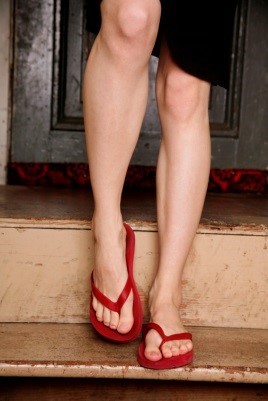 As the weather begins to transition into a warmer atmosphere, many individuals will want to slip into more comfortable flip-flops; however, Cosmopolitan has come up with a few reasons why you should avoid the shoe type this season.
As the weather begins to transition into a warmer atmosphere, many individuals will want to slip into more comfortable flip-flops; however, Cosmopolitan has come up with a few reasons why you should avoid the shoe type this season.
Flip-Flops expose the feet to bacteria and other infections that can cause irritation to the skin as well as exposing the feet to athlete’s foot and HPV the cause of plantar warts. Studies have also shown that flip flops cause you to slow down and make you clumsier because of the shorter stride you would have to take while wearing the shoe.
The thin strap that keeps the shoe on the foot is also a major cause of blisters and the thin foam in between the foot and the ground often cause heel pain, poor posture, shooting pains, and other foot problems.
Flip-flops can cause a lot of damage to the feet and rest of the body. If you have any concerns about your foot and ankle needs contact one of our podiatrists of New York Foot and Ankle. Our doctors will treat your foot and ankle needs.
Flip-Flops and Feet
Flip-flops are not only very popular, but very convenient, especially in the warmer weather. They allow your feet to breathe and let you move your toes freely. They also go with most attire and can be worn with many different clothing styles. Unfortunately, these type of shoes also have a disadvantage, as they can cause harm to your feet in more ways than you think. These symptoms include:
- Ball and arch problems in the foot
- Changes to the body’s natural gait
- Blisters
- Ankle Sprains
- Higher risk of infection
- Higher risk of scrapes and cuts to the feet
- Issues in the lower back, legs and ankles
To avoid these symptoms (and minimize your risks), select a pair of flip-flops made of high quality materials that can offer protection. Purchase flip-flops from a reliable manufacturer and be sure to replace them every three to four months. Be sure the soles are firm and not ‘floppy’, or that they don’t bend or wiggle a lot when lifted from the floor.
You can still wear your favorite pair of flip-flops if you so choose, just don’t wear them for extended periods of time, and especially not every day. However, it would be far wiser to purchase a more expensive pair of flip-flops or to refrain from wearing the shoe at all for the sake of your foot health. While these shoes are comfortable, the risks included with wearing them are not.
If you have any questions please feel free to contact our offices located in Franklin Square and Bethpage, NY. We offer the newest diagnostic tools and technology to treat your foot and ankle needs.
White Sox Pitcher Overcomes Foot Injury
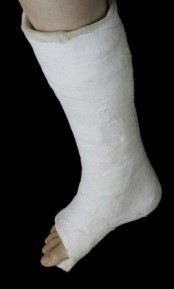 Chris Sale of the Chicago White Sox has overcome a foot injury just in time for the start of the season.
Chris Sale of the Chicago White Sox has overcome a foot injury just in time for the start of the season.
White Sox manager Robin Ventura stated, “He looked great. There is nothing else to say. It was vintage him.” His first couple of of pitches included a 98 mile per hour fastball and a 98 mile per hour heater that resulted in strike three.
The left-hander was on the mount for six straight innings and appeared to truly be back to his original skilled self.
Broken feet are very problematic. If you have any concerns about your feet contact one of our podiatrists of New York Foot and Ankle. Our doctors will treat your foot and ankle needs.
Broken Foot Causes, Symptoms, and Treatment
A broken foot is caused by one of the bones in the foot typically breaking when bended, crushed, or stretched beyond its natural capabilities. Usually the location of the fracture indicates how the break occurred, whether it was through an object, fall, or any other type of injury.
Common Symptoms of Broken Feet:
- Bruising
- Pain
- Redness
- Swelling
- Blue (foot)
- Numbness
- Cold
- Misshapen
- Cuts
- Deformities
Those that suspect they have an broken foot shoot seek urgent medical attention where a medical professional could diagnose the severity.
Treatment for broken bones varies depending on the cause, severity and location. Some will require the use of splints, casts or crutches while others could even involve surgery to repair the broken bones. Personal care includes the use of ice and keeping the foot stabilized and elevated.
If you have any questions please feel free to contact our offices located in Franklin Square and Bethpage, NY. We offer the newest diagnostic tools and technologies to treat your foot and ankle needs.
Plantar Warts can be treated in Many Ways
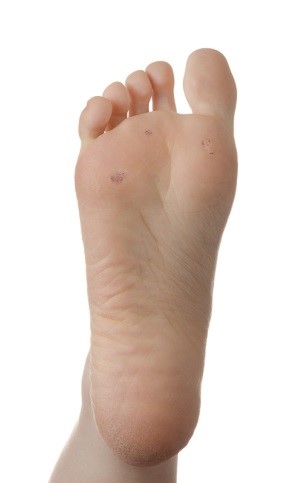 Warts can occur on nearly any part of the body, but when they are found on the feet they are called plantar warts. Warts are caused by different strains of the human papillomavirus.
Warts can occur on nearly any part of the body, but when they are found on the feet they are called plantar warts. Warts are caused by different strains of the human papillomavirus.
Warts can spread from skin to skin contact as well as through surfaces and can be treated through a variety of ways. Dr. Andrew Smith of the daily times states that one way plantar warts can be treated are by just ignoring them. Accordingly 65% of warts disappear on their own within two years.
For the tougher warts that are a little bit more stubborn there’s non-prescription salicylic acid, liquid nitrogen and even surgical excision.
If you are struggling with plantar warts, there is most likely a treatment available to remove them. Contactone of our podiatrists of New York Foot and Ankle for more information. Our doctors will treat your foot and ankle needs.
About Plantar Warts
Plantar warts are the result of HPV, or human papillomavirus, getting into open wounds on the feet. They are mostly found on the heels or balls of the feet.
While plantar warts are generally harmless, those experiencing excessive pain or those suffering from diabetes or a compromised immune system require immediate medical care. Plantar warts are easily diagnosed, usually through scraping off a bit of rough skin or by getting a biopsy.
Symptoms
· Legions on the bottom of your feet, usually rough and grainy
- Hard or thick callused spots
· Wart seeds, which are small clotted blood vessels that look like little black spots
· Pain, discomfort, or tenderness of your feet when walking or standing
Treatment
- Freezing
- Electric tool removal
- Laser Treatment
- Topical Creams (prescription only)
- Over-the-counter medications
To help prevent developing plantar warts, avoid walking barefoot over abrasive surfaces that can cause cuts or wounds for HPV to get into. Avoiding direct contact with other warts, as well as not picking or rubbing existing warts, will help prevent the further spread of plantar warts. However, if you think you have developed plantar warts, speak to your podiatrist. He or she can diagnose the warts on your feet and recommend the appropriate treatment options.
If you have any questions please feel free to contact our offices located in Bethpage and Franklin Square, NY. We offer the newest diagnostic tools and technology to treat your foot and ankle needs.
More...
Stress Fracture Recovery Involves Patience
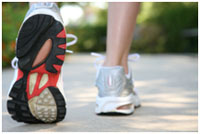 When runner Vicky Huber Rudawsky reinjured her stress fracture in her foot after putting too much pressure on it too soon, she learned a valuable lesson in patience. Once Huber Rudawsky was cleared by her doctor after waiting nearly a year to recover from her initial stress fracture she “hit the ground running” and immediately got back into heavy training.
When runner Vicky Huber Rudawsky reinjured her stress fracture in her foot after putting too much pressure on it too soon, she learned a valuable lesson in patience. Once Huber Rudawsky was cleared by her doctor after waiting nearly a year to recover from her initial stress fracture she “hit the ground running” and immediately got back into heavy training.
The runner should have gradually got back into her routine starting with low weight-bearing activities such as swimming. Another way to prevent or reduce the probability of a stress fracture includes cross training, the alternating of activities so no one area of the body faces the same stresses every day.
Wearing shoes with proper support and incorporating calcium and vitamin D in your meals can also prevent stress fractures.
Stress fractures are painful and can keep runners off of their feet for a long period of time. If you think you have a stress fracture contact one of our podiatrists of New York Foot and Ankle. Our doctor will treat your foot and ankle needs.
Dealing with Stress Fractures of the Foot and Ankle
The Stress Fractures occur on the foot and ankle when muscles in these areas weaken from too much or too little use. Then the feet and ankles lose support when walking or running from the impact of the ground. Since there is no protection the bones receive the full impact of each step. The stress on the feet causes cracks to form in the bones, thus called stress fractures.
What are Stress Fractures?
Stress fractures occur frequently in individuals whose daily activities cause great impact on the feet and ankles. Stress factors are most common among:
-runners
-people affected with Osteoporosis
-play tennis or basketball
-gymnastics
-high impact workouts
Symptoms
Pain from the fractures occur in the area of the fractures, and can be constant or intermittent. It will often cause sharp or dull pain with swelling and tenderness. Engaging in any kind of activity which involves in high impact will aggravate pain.
Treatment
The individual and the degree of injury depend on the fracture of the foot. Some fractures heal very fast while others take a long times and one would need crutches.
- Surgery with support pins around the fracture helps
- A great intake of Calcium and Vitamin-D helps for strong bones
- Set a regimen for running or other activity
- Wear supportive shoes
If you experience any discomfort or stress stop what you are doing and get rest. If symptoms persist see an orthopedic specialist right away.
If you have any questions please contact our offices located in Franklin Square and Bethpage, NY. We offer the newest diagnostic and treatment technologies for all your foot and ankle needs.
CJ Miles Discusses His Use of Orthotics for Sore Flat Feet
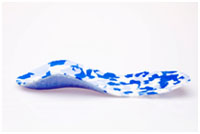 Indiana Pacers’ forward CJ Miles was feeling spasms in his feel while participating in his pregame routine, when he decided to go back to the locker room for treatment.
Indiana Pacers’ forward CJ Miles was feeling spasms in his feel while participating in his pregame routine, when he decided to go back to the locker room for treatment.
The cramp-like feeling in his feet was due to his flat feet locking up during training. Miles has even stated that his feet are so flat he has suffered from calf strains. The forward has been working with trainer Josh Corbeii to find the right fit of orthotics to reduce the unpredictable cramping of his feet during games and practices.
If you are having discomfort in your feet and would like to try orthotics, contact one of our podiatrists of New York Foot and Ankle. Our doctors will treat your foot and ankle needs.
What are Orthotics?
Orthotics are inserts you can place into your shoes to help with a variety of foot problems such as flat feet or foot pain. Orthotics provide relief and comfort for minor foot and heel pain, but can’t correct serious biomechanical problems in your feet.
Over-the-Counter Inserts
Orthotics come in a wide variety of over-the-counter inserts that are used to treat foot pain, heel pain, and minor problems. For example, arch supports can be inserted into your shoes to help correct over arched or flat feet, while gel insoles are often used because they provide comfort and relief from foot and heel pain by alleviating pressure.
Prescription Orthotics
If over-the-counter inserts don’t work for you, or if you have a more severe foot issue, it is possible to have your podiatrist prescribe custom orthotics.
These high quality inserts are designed to treat problems such as abnormal motion, plantar fasciitis, and more severe heel pain.
They can even be used to help patients suffering from diabetes by treating foot ulcers and painful calluses, and are usually molded to your feet individually, which allows them to provide full support and comfort.
If you are experiencing minor to severe foot or heel pain, it’s recommended to speak with your podiatrist on the possibilities of using orthotics. A podiatrist can determine which type of orthotic is right for you and allow you to take the first steps towards being pain free.
If you have any questions, please feel free to contact our offices located in Franklin Square and Bethpage, NY. We offer the newest diagnostic and holistic treatment protocols for all your individual foot and ankle needs.
Read More About Orthotics
Doctor Discusses Typical Signs of Toenail Fungus
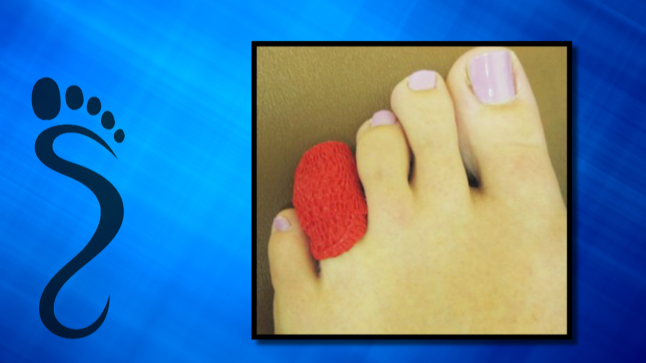 According to Dr. Pfenninger of the Midland Daily News, it is estimated that ten percent of the adult population already has some type of nail fungus. At times, individuals can have toenail fungus and not even be aware that it is there. Some signs of nail fungus include thickening, discoloration, weak nails, appearance of debris under the nail, foul smells when nails are wet, and the occasional lifting up of the nail into a tent-shape. Older individuals and women are also more likely to have fungus in their toenails. Many people may have toenail fungus but initially confuse it for an ingrown toenail. Although there are topical and oral antifungal medications available, prevention is important. To avoid nail fungus, allow your feet to fully dry after showering and keep the nails groomed.
According to Dr. Pfenninger of the Midland Daily News, it is estimated that ten percent of the adult population already has some type of nail fungus. At times, individuals can have toenail fungus and not even be aware that it is there. Some signs of nail fungus include thickening, discoloration, weak nails, appearance of debris under the nail, foul smells when nails are wet, and the occasional lifting up of the nail into a tent-shape. Older individuals and women are also more likely to have fungus in their toenails. Many people may have toenail fungus but initially confuse it for an ingrown toenail. Although there are topical and oral antifungal medications available, prevention is important. To avoid nail fungus, allow your feet to fully dry after showering and keep the nails groomed.
While toenail fungus is troublesome to eradicate, it is not impossible. For more information about treatment, consult with one of our podiatrists from New York Foot Experts. Our doctors will attend to all of your podiatric needs.
Toenail Fungus Treatment
Toenail fungus is a problem which affects many people and is hard to get rid of. Fortunately, there are several methods to go about treating toenail fungus.
Antibiotics & Treatments
Lamisil – is the most commonly effective treatment for toenail fungus. It is available as an antibiotic Terbinafine tablet and cream. Terbinafine is a chemical component which kills fungal growth on the body. Applying regular doses will gradually kill the fungal growth. It is important to keep the area clean and air free.
Talcum powder – applying powder on the feet and shoes helps keep the feet free of moisture and sweat.
Sandals or open toed shoes – wearing these will allow air movement and help keep feet dry. They also expose your feet to light, which fungus cannot tolerate. Socks with moisture wicking material also help as well
Alternative Treatments
There are always surgical procedures that are available for toenail fungus. Some people would like immediate quick removal of toenail fungus. Surgeons will be able to cut through and remove the growth using laser surgery. It is important not to try and remove it yourself. Once removed, your old shoes will need to be replaced to avoid reinfection.
For more information about Toenail Fungus, follow the link below.
If you have any questions, please feel free to contact our offices located in New York, NY. We offer the newest diagnostic and treatment technologies for all your foot care needs.
Read more about Toenail Fungus
Cold Temperatures cut off Blood Supply to Toes
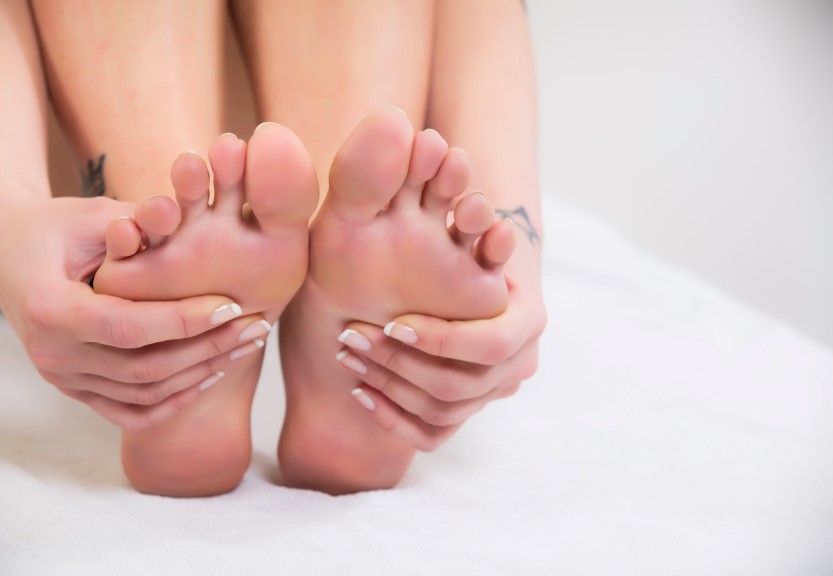 A loss of blood circulation in the feet and legs is often caused by peripheral artery disease. Come the winter season, many people suffer from numb fingers and toes as a result of losing blood circulation to their extremities due to colder temperatures. Raynaud’s disease, a condition in which the blood vessels in the fingers and toes contract in response to drops in temperature, is behind an estimated ten million people’s loss of blood supply. The ceasing of blood flow to the fingers and toes often causes them to turn icy wait. Raynaud attacks can last from a few minutes to an hour. When blood flow returns, the fingers or toes will turn blue and eventually red, accompanied with a burning sensation. Due to winter’s drop in temperature, attacks often peak during the cold months.
A loss of blood circulation in the feet and legs is often caused by peripheral artery disease. Come the winter season, many people suffer from numb fingers and toes as a result of losing blood circulation to their extremities due to colder temperatures. Raynaud’s disease, a condition in which the blood vessels in the fingers and toes contract in response to drops in temperature, is behind an estimated ten million people’s loss of blood supply. The ceasing of blood flow to the fingers and toes often causes them to turn icy wait. Raynaud attacks can last from a few minutes to an hour. When blood flow returns, the fingers or toes will turn blue and eventually red, accompanied with a burning sensation. Due to winter’s drop in temperature, attacks often peak during the cold months.
Diseases that cause poor circulation in the feet can be extremely dangerous. If you are having difficulties with reduced circulation, see one of our podiatrists of New York Foot and Ankle. Our doctors will identify the cause of your decreased blood flow and help you get the care you need.
Poor Circulation in the Feet
Poor blood circulation in the feet and legs is caused by peripheral artery disease (PAD), which is the result of a buildup of plaque in the arteries.
Plaque buildup or atherosclerosis results from excess calcium and cholesterol in the bloodstream. It usually restricts the amount of blood which can flow through the arteries. Poor blood circulation in the feet and legs are sometimes caused by inflammation in the blood vessels, known as vasculitis.
Causes
Lack of oxygen and oxygen from poor blood circulation restricts muscle growth and development.
It can also cause:
- muscle pain
- numbness in legs
- cramps
- skin discoloration
- weakness
- slower nail & hair growth
- stiffness
- erectile dysfunction
Those who have diabetes and or smoke are at greatest risk for poor circulation, or who are over 50.
If you have poor circulation in the feet and legs it may be caused by PAD, and is important to make changes to your lifestyle in order to reduce risk of getting a heart attack or stroke. Exercise and maintain a healthy lifestyle will dramatically improve conditions.
If you have any questions, please contact one of our offices located in Franklin Square and Bethpage, NY. We offer the newest diagnostic and treatment technologies for all your foot care needs.
Read more about Poor Circulation in the Feet
